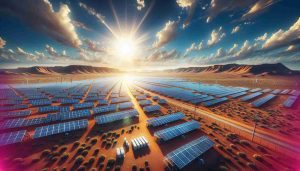Big Plans for Leapmotor in Australia! Could a Ute Be on the Horizon?

Leapmotor is not slowing down! The ambitious Chinese electric vehicle manufacturer has officially entered the Australian market, and they have set their sights on producing a pick-up truck or “ute”. This ambitious leap comes alongside their goal to drastically increase sales in international markets.
Currently best known for passenger cars and SUVs, Leapmotor is keen to expand its portfolio. With a target of selling 500,000 vehicles annually outside of China by 2030, the company has set a high bar, especially compared to the 3,165 vehicles sold in 2024. During a recent discussion with Australian media, the company’s International product marketing director emphasized the importance of exploring diverse offerings, including light commercial vehicles and potentially off-road SUVs.
Leapmotor’s expansion into the Australian market kicks off with the C10 EV, priced competitively, undercutting popular rival models. Following the C10, plans include a range-extended plug-in hybrid version, with additional electric models slated for subsequent years.
Although the idea of a ute is still in the assessment phase, industry experts believe Leapmotor’s existing partnerships, particularly with Stellantis—home to Jeep and RAM—could facilitate this venture. As Leapmotor continues to evolve rapidly, it remains to be seen how these exciting developments will unfold in the coming years.
Global Impact of Leapmotor’s Expansion
Leapmotor’s aggressive entry into the Australian market marks not just a significant step for the company, but also a broader shift in the automotive landscape that could influence society and the global economy. With established automotive giants facing intensified competition from nimble players like Leapmotor, consumer choice is set to expand dramatically. As electric vehicles (EVs) gain traction, we can anticipate a ripple effect, potentially driving down the prices of fossil-fueled vehicles and accelerating the transition to sustainable energy alternatives.
The focus on producing a pick-up truck or “ute” intersects with the growing demand for electric commercial vehicles. In Australia, where utes are cultural icons in both urban settings and rural landscapes, Leapmotor’s move could encourage other manufacturers to elevate their electric offerings. This will likely catalyze a shift in consumer perceptions about EV capabilities, leading to potentially lower emissions and a reduced carbon footprint across the sector.
Environmentally, the implications are manifold. The increased presence of EVs may facilitate the expansion of charging infrastructure, further embedding sustainability in urban planning and transport policies. As automakers pivot to electric, investment in renewable energy sources for charging stations can bolster innovation in clean technology, creating jobs and stimulating the economy.
Looking forward, as Leapmotor navigates its plans for a range of electrified vehicles, it may also contribute to the global trend toward energy independence. The movement toward sustainable transport is not just a local concern; it speaks to urgent global goals of reducing dependency on traditional energy resources, combating climate change, and fostering a more interconnected economic future. The stakes are high, and Leapmotor’s journey could serve as a bellwether for the evolving automotive ecosystem.
Leapmotor’s Ambitious Expansion: A Game Changer for the Australian EV Market
Introduction
Leapmotor, a rising star in the electric vehicle (EV) landscape, is making waves with its entry into the Australian market. Known primarily for its passenger cars and SUVs, the Chinese manufacturer is setting ambitious goals and eyeing new segments, including the production of a pick-up truck, commonly referred to as a “ute” in Australia. This article explores the implications of Leapmotor’s expansion, the vehicles they are introducing, and what it means for the competition and consumers alike.
Leapmotor’s Market Goals
Leapmotor has outlined a target to sell an impressive 500,000 vehicles annually outside of China by the year 2030. This goal presents a significant challenge, especially considering the modest sales of 3,165 vehicles reported in 2024. The company’s strategy involves diversifying its offerings, particularly by venturing into light commercial vehicles and potentially off-road SUVs, tailored to meet the demands of the Australian market.
The C10 EV Launch
Kicking off its Australian venture, Leapmotor has introduced the C10 EV. This vehicle is positioned competitively, priced to undercut some of the popular models currently dominating the market. The strategic pricing aims to attract a wide customer base and penetrate a market that is increasingly receptive to electric options.
# Features of the C10 EV
– Affordability: The competitive pricing strategy is aimed at making EVs accessible to more consumers.
– Technology: Incorporating advanced electric technology, the C10 aims to offer both performance and range that can compete with established brands.
– Sustainability: With an environmentally friendly design, the C10 is positioned as a responsible choice for eco-conscious consumers.
Future Product Plans
Following the C10, Leapmotor plans to introduce a range-extended plug-in hybrid version to cater to varying preferences among consumers who may be hesitant to transition fully to electric. In addition, further electric models are expected in subsequent years, signaling Leapmotor’s commitment to innovation and sustainability.
Potential for Ute Production
Although the concept of a ute is still in the exploratory stages, industry experts speculate that Leapmotor’s existing partnership with Stellantis—parent company to established brands like Jeep and RAM—could streamline the development process. This collaboration could bring valuable expertise and resources that might accelerate Leapmotor’s plans for entering the pick-up truck market.
Pros and Cons of Leapmotor’s Entry
# Pros:
– Competitive Pricing: Leapmotor’s initial pricing strategy could disrupt the market by offering more affordable EV options.
– Innovative Technology: The focus on technology could lead to advancements in vehicle performance and efficiency.
– Sustainable Practices: As an EV manufacturer, Leapmotor adds to sustainability efforts in the auto industry.
# Cons:
– Brand Recognition: As a new entrant, Leapmotor may face challenges in gaining consumer trust compared to established brands.
– Market Competition: The competitive landscape in Australia features many well-known players in the EV market, posing challenges for newcomer success.
– Potential Production Delays: The ambitious plans and new vehicle types may face hurdles in production and supply chain logistics.
Insights and Predictions for the Future
As Leapmotor continues its rapid evolution, market analysts are keenly observing how they will navigate the Australian automotive landscape. With increasing demand for electric and hybrid vehicles, Leapmotor’s timing aligns well with consumer trends aiming for sustainability. Predictions suggest a growing acceptance of EVs in Australia, particularly as government policies increasingly favor electric over traditional combustion engines.
Conclusion
Leapmotor’s entry into the Australian market with the C10 EV marks a significant step in the electrification of the automotive sector. With ambitious sales goals, plans for diverse vehicle offerings, and a potential for innovative partnerships, Leapmotor is poised to become a noteworthy competitor. As the automotive industry evolves, Leapmotor’s journey will be crucial to watch, especially as consumers shift towards more sustainable vehicle choices.
For more information on Leapmotor and its offerings, visit Leapmotor.



